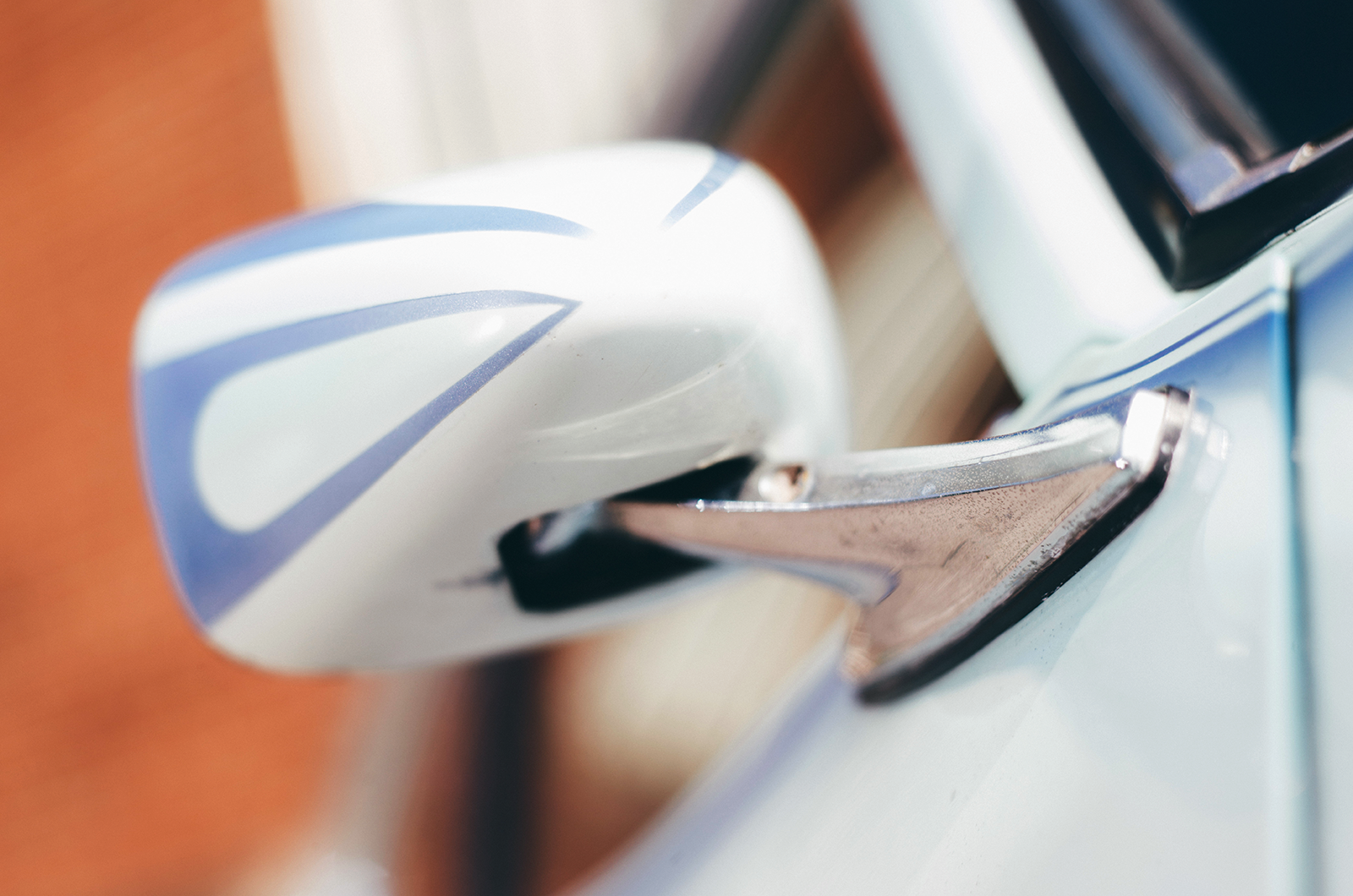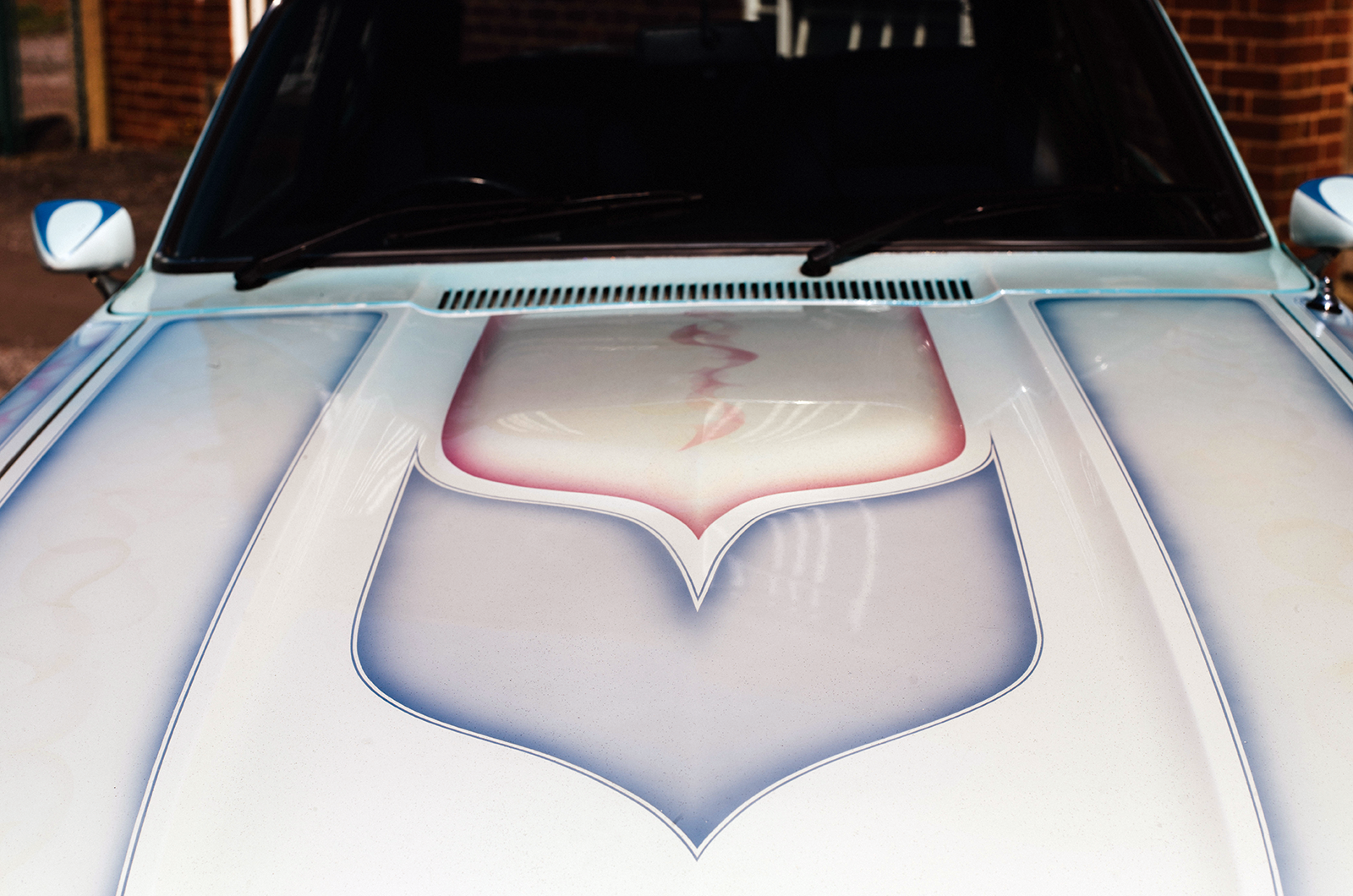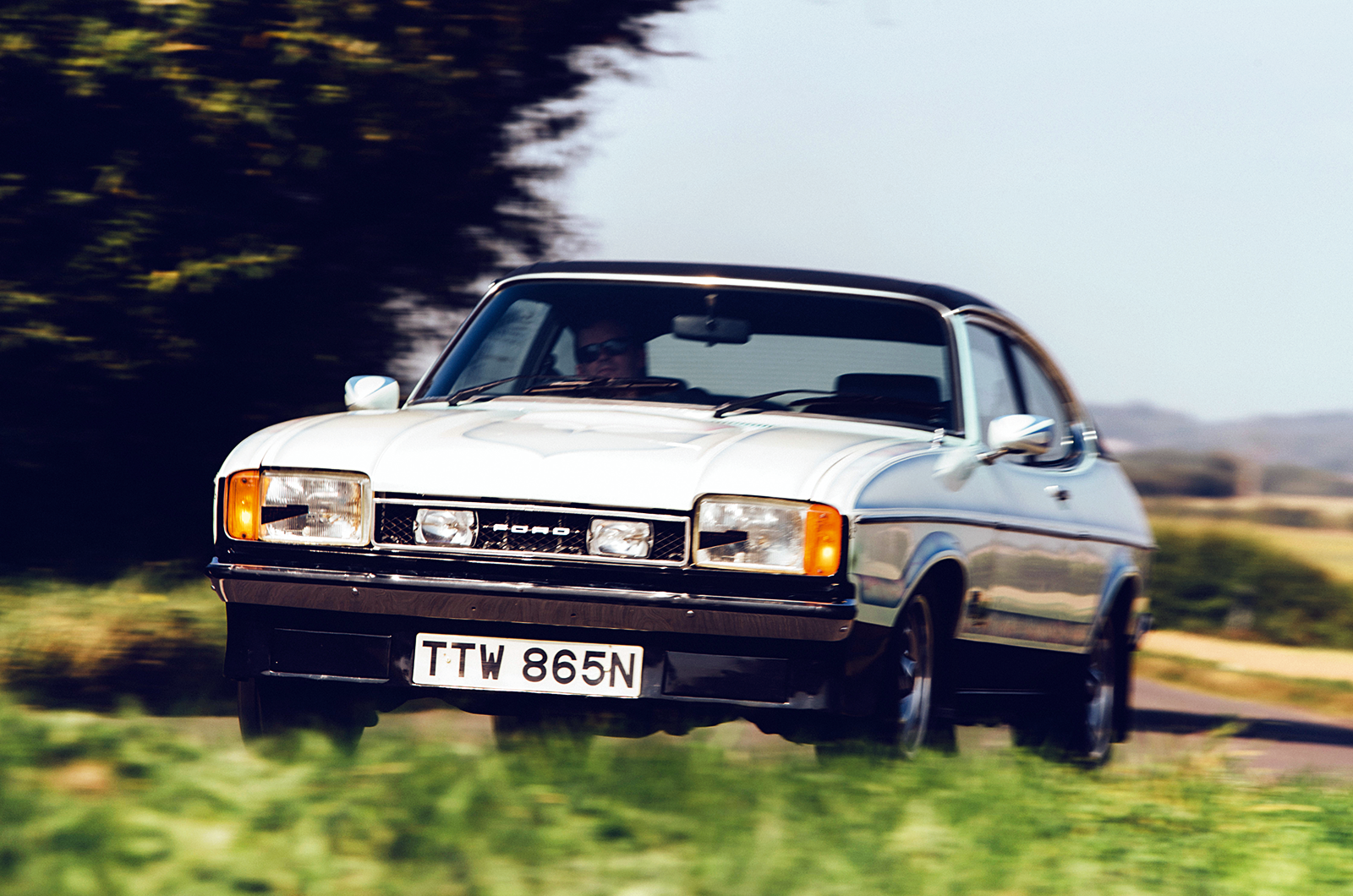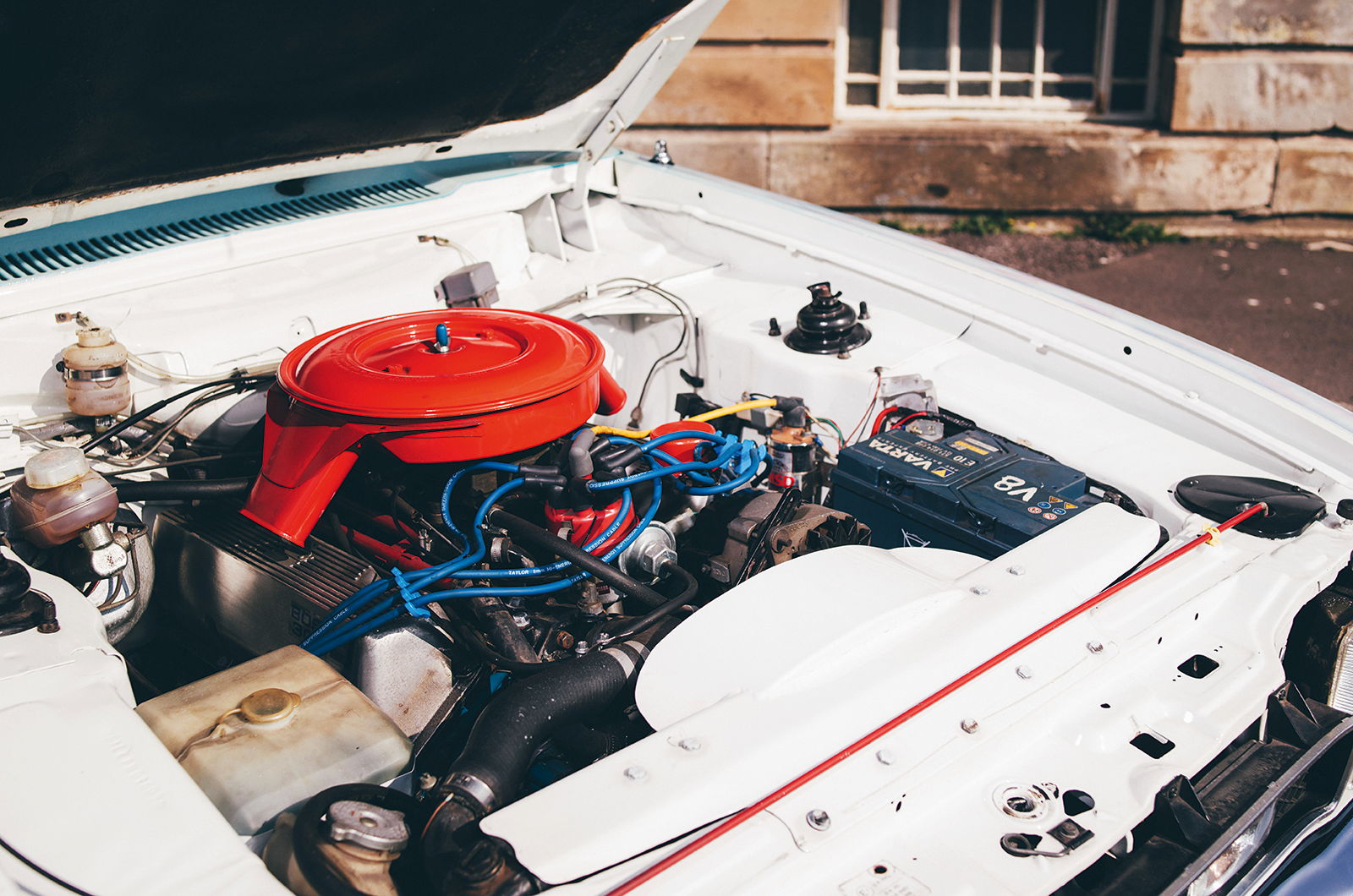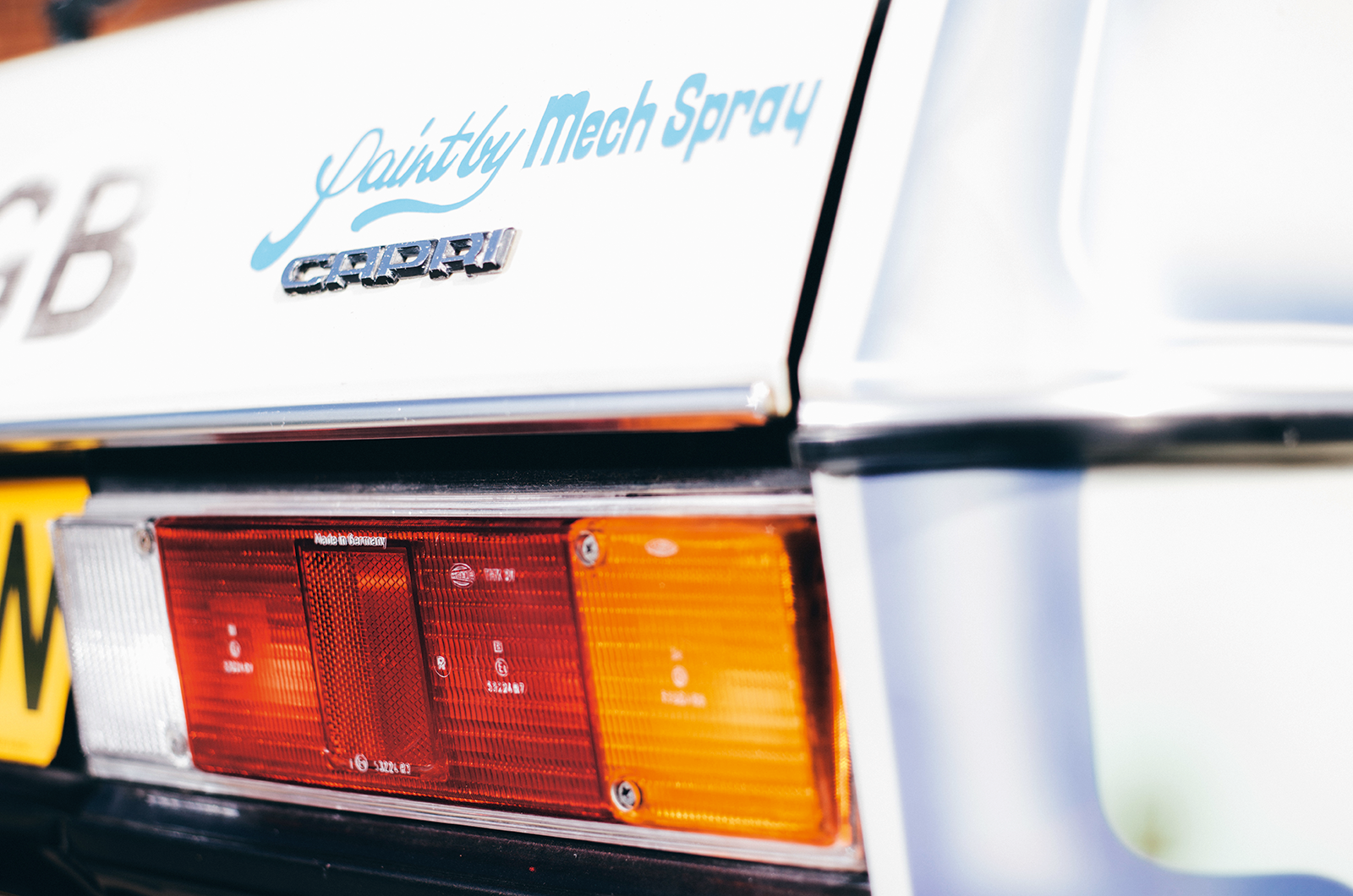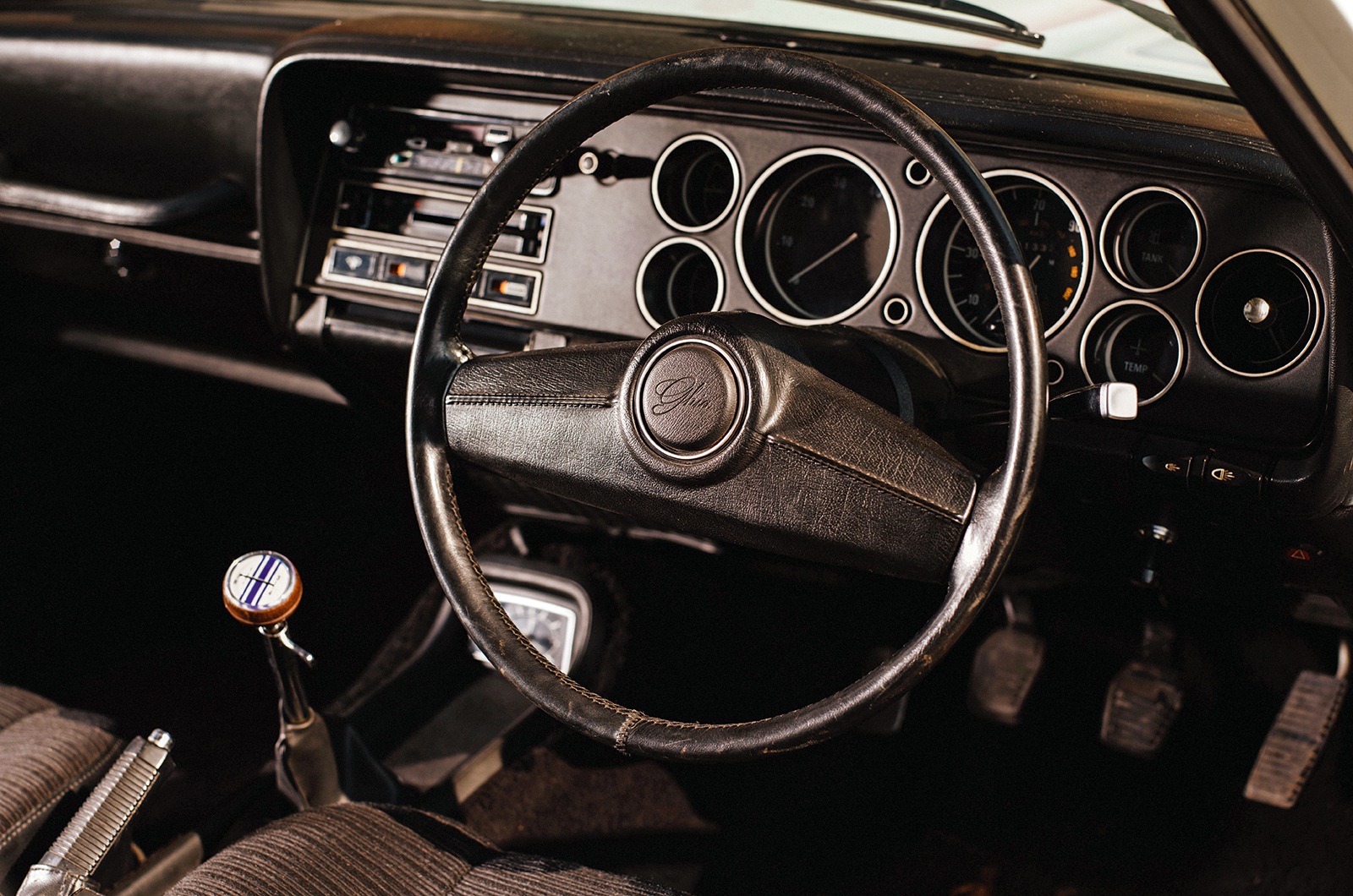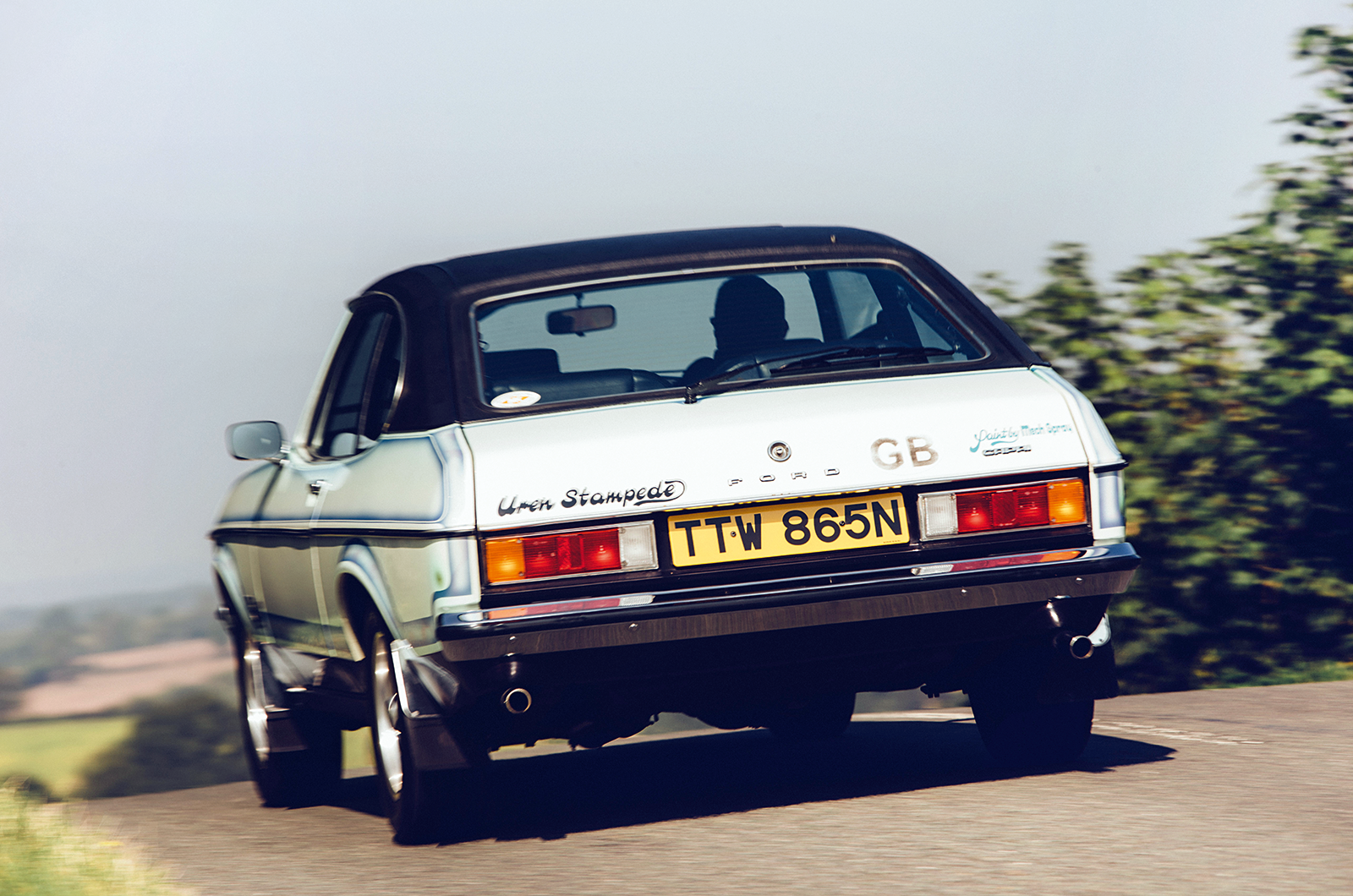
Where do you want to start? With the crazy paint, glinting and shimmering in the late-summer sun? Or beneath the bonnet, where – in place of the normal 3-litre V6 powerplant – there rests a 5-litre V8?
Either way, it’s clear that this is no ordinary Ford Capri. And neither is it some superficial custom effort that is all mouth and no trousers.
Perhaps we’d better rewind to the beginning, because this car did at least start its life as a standard Mk2. In summer 1974, an order was placed within Ford GB for a new Management Role car – a perk of the job that those far enough up the ladder could enjoy for a few months before they ordered a replacement.
Over at the Cologne factory, the Capri 3-litre Ghia automatic was assembled and shipped to the UK, being registered TTW 865N in Chelmsford. So, for a year or so, the car was run by a management type before passing into the Ford dealer network.
Enter Stamos Fafalios, who worked in London for the family shipping firm. As a car enthusiast, Fafalios was aware of the conversions carried out by Race Proved Performance and Equipment Ltd based in Hanwell and, as a young man of comfortable means, he was able to satisfy his desire for one.
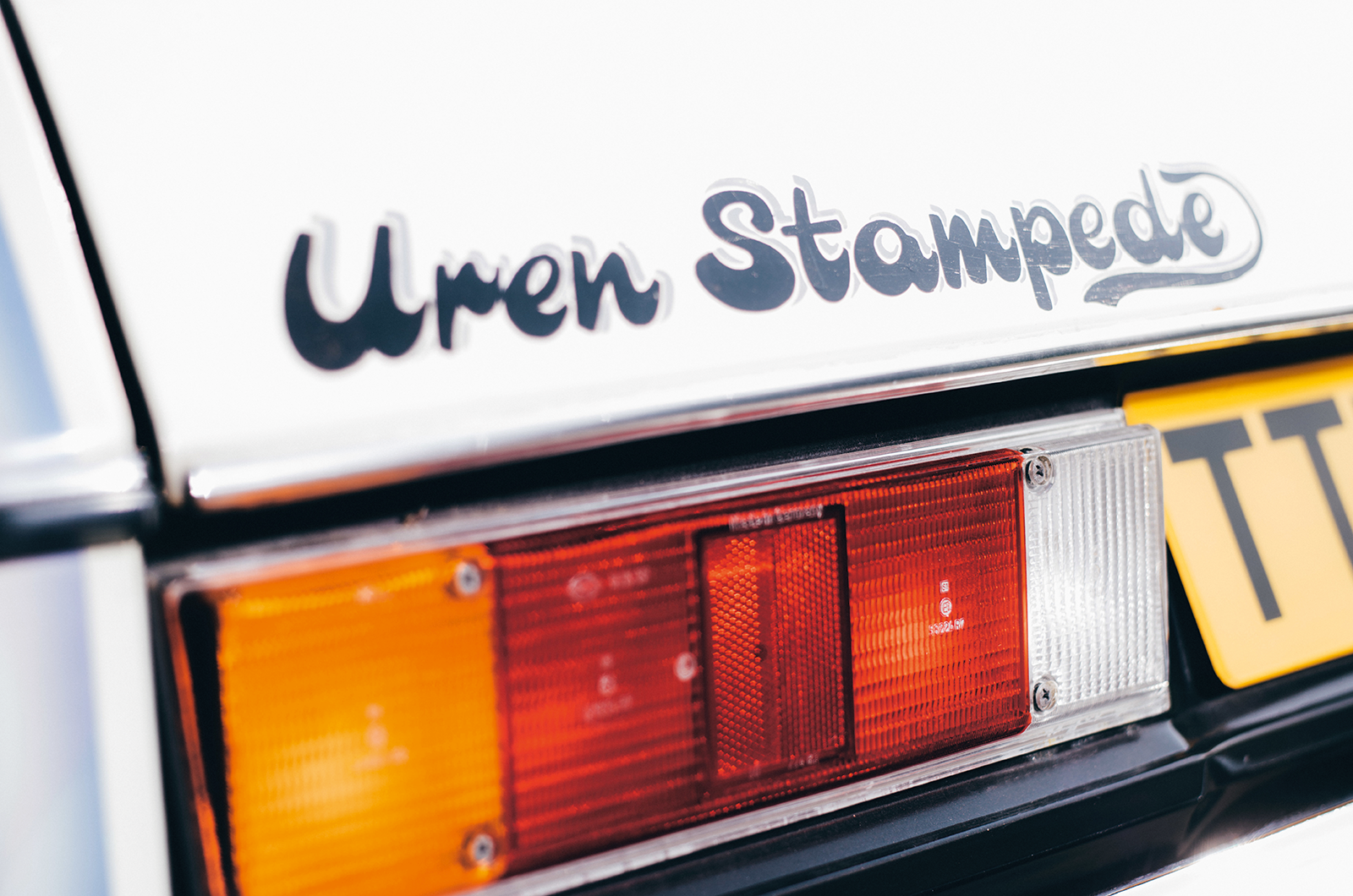
Race Proved had been set up by Jeff Uren in 1967. Uren had a long association with Ford, and he was no mean driver in his time. He and his brother Douglas had entered the 1954 Rallye Monte-Carlo in an Armstrong Siddeley before turning to circuit racing. In 1959, he won the British Saloon Car Championship at the wheel of a Ford Zephyr, then went on to score a number of wins aboard various models, and later become competitions manager for the Blue Oval.

